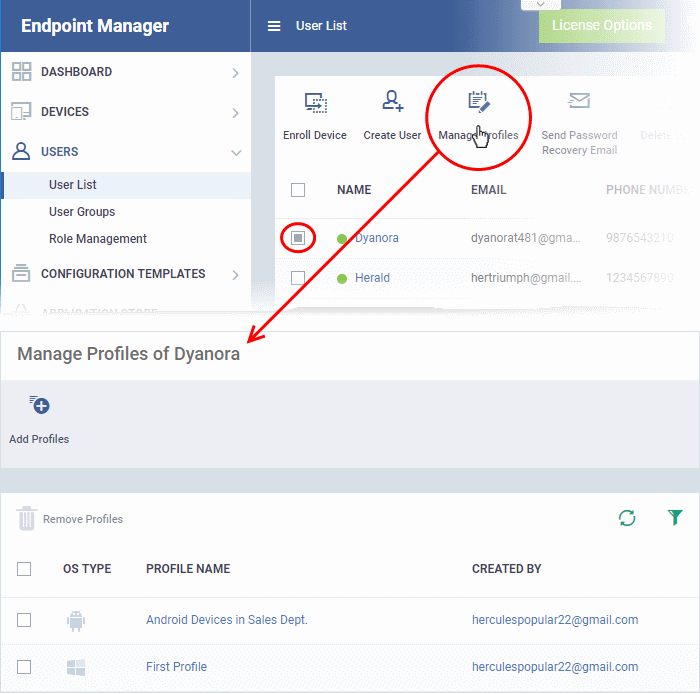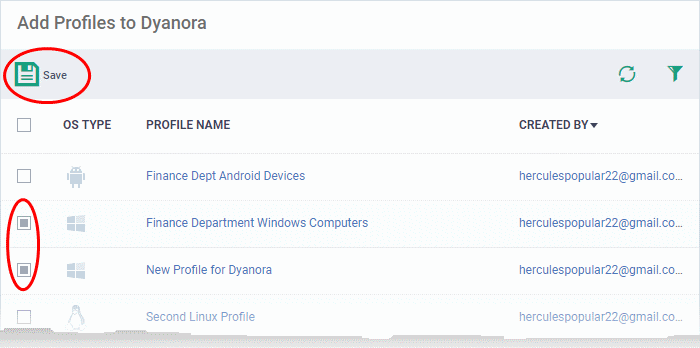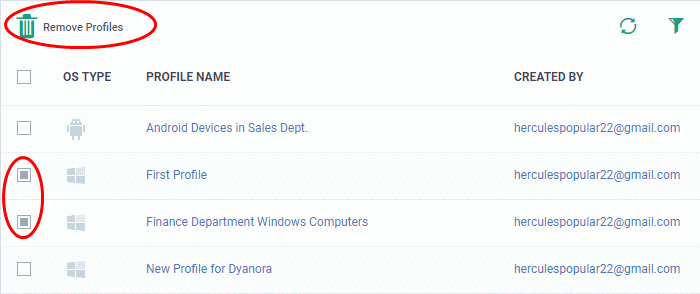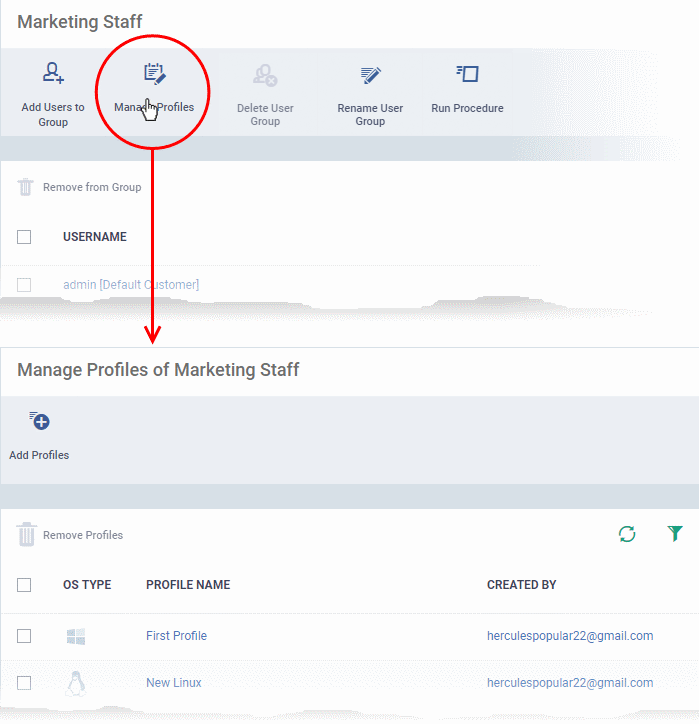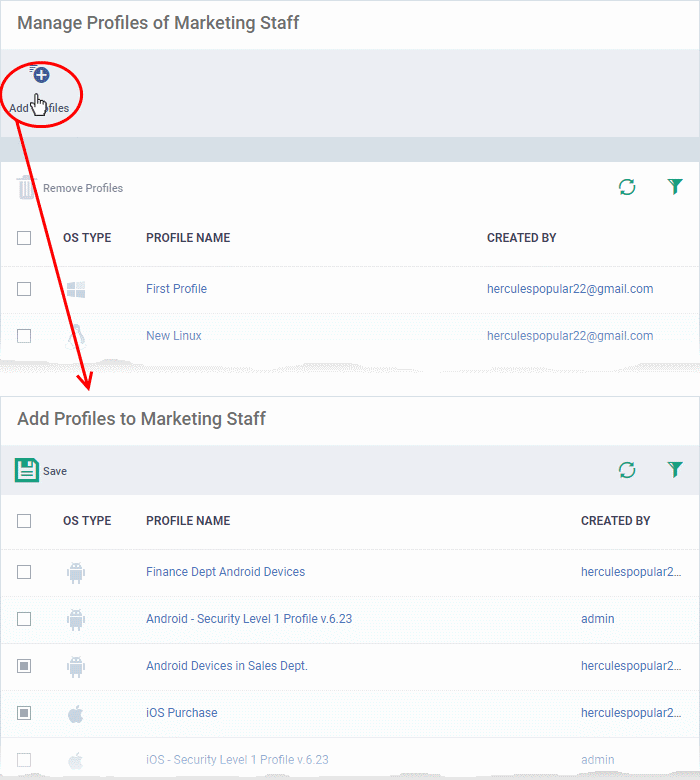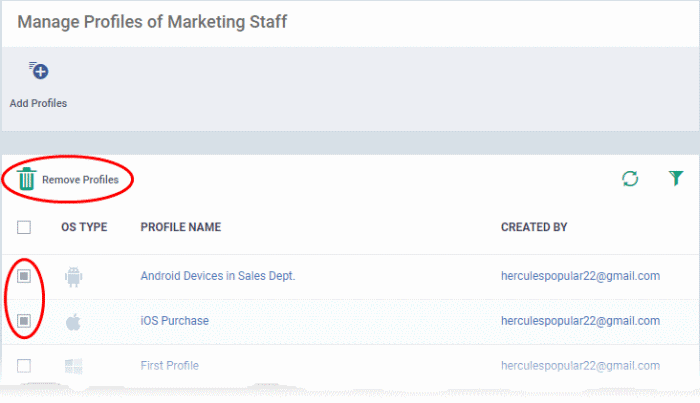How to apply a profile to users and user groups
4 Ways you can assign profiles to devices
1) Assign the profile to the device owner, aka the 'user'.
- Click 'Users' > 'User List' > click a username > 'Manage Profiles' > 'Add Profiles'
2) Assign the profile to a user group. Make the user (device owner) a member of the group
- Click 'Users' > 'User Groups' > click a group name > 'Manage Profiles' > 'Add Profiles'
3) Assign the profile to the device itself.
- Click 'Devices' > 'Device List' > click a device name > 'Manage Profiles' > 'Add Profiles'
4) Assign the profile to a device group. Make the device a member of the group.
- Click 'Devices' > 'Device List' > 'Group Management' tab > click a group name > 'Manage Profiles'
This wiki explains 1) and 2) - how to apply profiles to individual users and to user groups.
Profiles assigned to a user will apply to all devices owned by the user. You can apply multiple profiles for different operating systems to a user. Endpoint Manager will apply the appropriate profile to a device depending on its OS.
- Click 'Users' > 'User List'
- Select the user to whom you want to assign the profile
- Click 'Manage Profiles'
- Alternatively, click 'Users' > 'User List' > click on a username > 'Manage Profiles'.
The screen shows all profiles assigned to a user. You can add, remove or edit profiles as required.
- Click the 'Add Profiles' button above the list.
The next screen shows all profiles that you can add to the user. The list excludes profiles which are already assigned to the user:
- Select the profiles you want to add and click 'Save'
The new profiles are automatically deployed to the user's devices.
Remove a profile
- Click 'Users' > 'User List'
- Select the target user
- Click 'Manage Profiles'
- Select the profiles you want to disassociate then click 'Remove Profiles'
- The selected profiles are immediately removed from devices belonging to the user.
Apply profiles to a user group
Profiles you apply to a user group get applied to all members of the group, and in-turn to their devices. You can apply multiple profiles for different operating systems to a user group. Endpoint Manager applies the appropriate profile to a device depending on its OS.
- Click 'Users' > 'User Groups'.
- Click on the name of the group whose profiles you wish to manage.
- The group details screen shows all users in the group.
- Click 'Manage Profiles' at the top:
The screen shows all profiles assigned to the group. You can add, remove or edit profiles as required.
- Click the 'Add Profiles' button above the list
The next screen shows all profiles that you can add to the group. The list excludes profiles that are already assigned to the group:
- Select the profiles you want to add to the group
- Click 'Save'
- The new profiles are automatically deployed to devices owned by group members.
Remove a profile from a group
- Click 'Users' > 'User Groups'.
- Click on the name of the group whose profiles you wish to manage.
- Click 'Manage Profiles' at the top of the group details screen
- Select the profile you want to remove then click 'Remove Profiles'
The profiles are removed from all devices belonging to group members.
|
|
Further reading:
How to create new user accounts and user groups in Endpoint Manager
How to enroll devices using the on-boarding wizard

